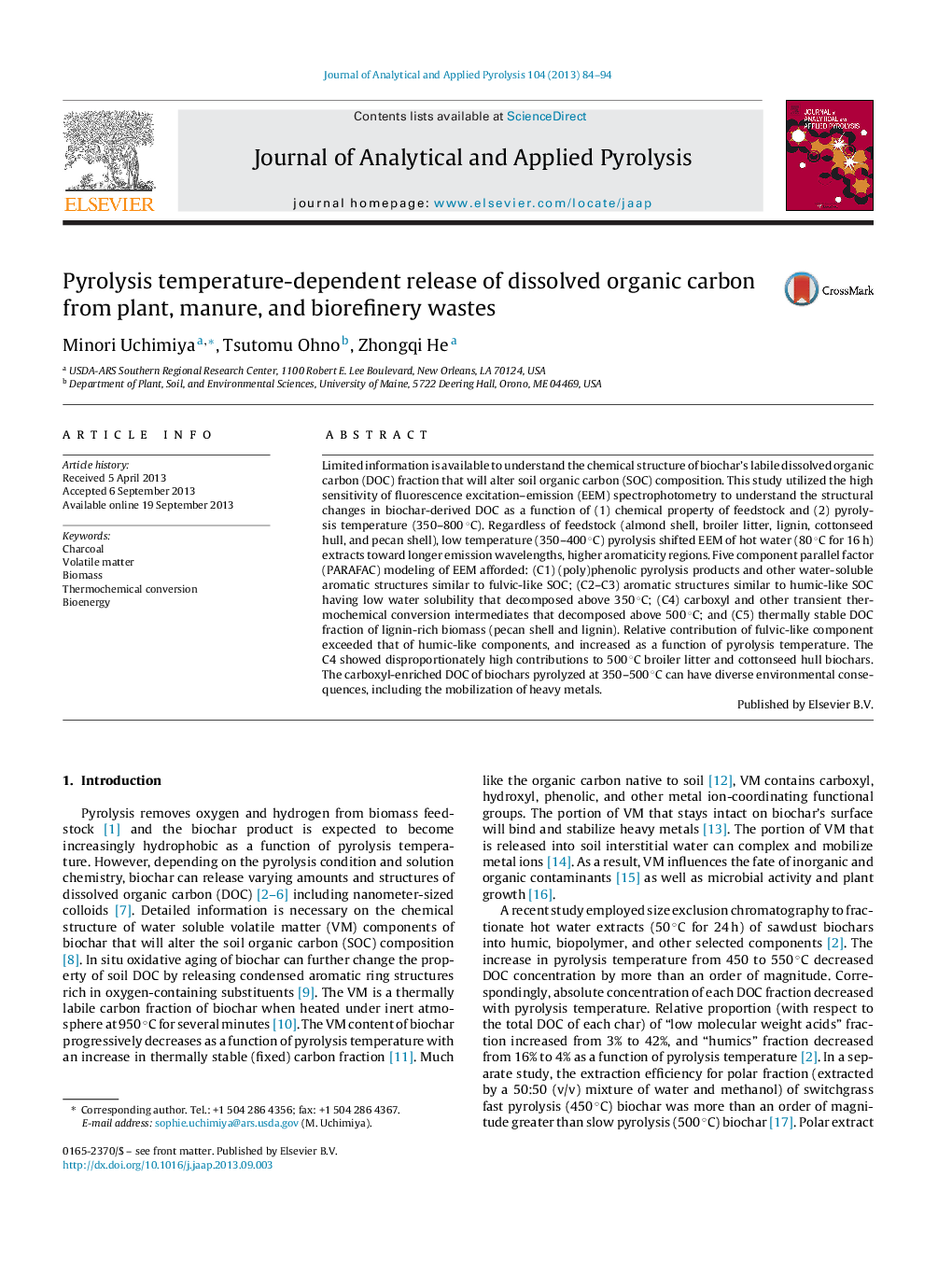| کد مقاله | کد نشریه | سال انتشار | مقاله انگلیسی | نسخه تمام متن |
|---|---|---|---|---|
| 1196766 | 1492973 | 2013 | 11 صفحه PDF | دانلود رایگان |

• Five component PARAFAC model afforded fulvic, humic, feedstock, transient components.
• Aromaticity of biochar DOC increased as a function of pyrolysis temperature.
• Biochar-derived DOC was enriched with carboxyl groups when pyrolyzed at 350–500 °C.
Limited information is available to understand the chemical structure of biochar's labile dissolved organic carbon (DOC) fraction that will alter soil organic carbon (SOC) composition. This study utilized the high sensitivity of fluorescence excitation–emission (EEM) spectrophotometry to understand the structural changes in biochar-derived DOC as a function of (1) chemical property of feedstock and (2) pyrolysis temperature (350–800 °C). Regardless of feedstock (almond shell, broiler litter, lignin, cottonseed hull, and pecan shell), low temperature (350–400 °C) pyrolysis shifted EEM of hot water (80 °C for 16 h) extracts toward longer emission wavelengths, higher aromaticity regions. Five component parallel factor (PARAFAC) modeling of EEM afforded: (C1) (poly)phenolic pyrolysis products and other water-soluble aromatic structures similar to fulvic-like SOC; (C2–C3) aromatic structures similar to humic-like SOC having low water solubility that decomposed above 350 °C; (C4) carboxyl and other transient thermochemical conversion intermediates that decomposed above 500 °C; and (C5) thermally stable DOC fraction of lignin-rich biomass (pecan shell and lignin). Relative contribution of fulvic-like component exceeded that of humic-like components, and increased as a function of pyrolysis temperature. The C4 showed disproportionately high contributions to 500 °C broiler litter and cottonseed hull biochars. The carboxyl-enriched DOC of biochars pyrolyzed at 350–500 °C can have diverse environmental consequences, including the mobilization of heavy metals.
Journal: Journal of Analytical and Applied Pyrolysis - Volume 104, November 2013, Pages 84–94